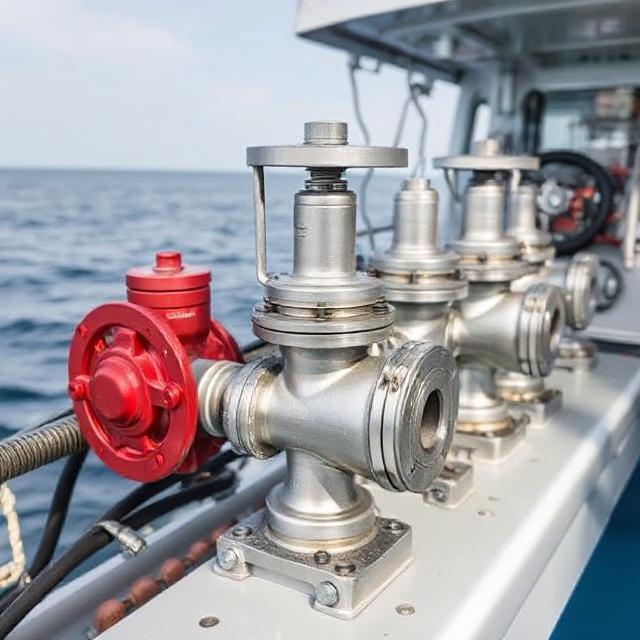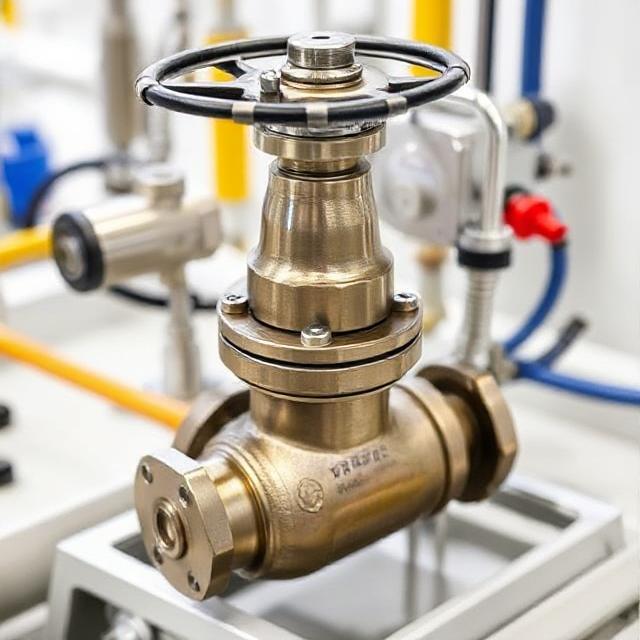Marine control systems are essential for the efficient and safe operation of ships and offshore platforms. These systems manage everything from propulsion and navigation to temperature regulation and fuel supply. One key group of components that keeps marine automation running smoothly is valve components.
Valves help control the flow of fluids, such as fuel, water, steam, and oil. Without reliable valves, marine systems would not function efficiently. In this blog, we will explore how valve components support marine automation, their types, how they work, and why they are crucial to modern marine manufacturing.
What Are Valve Components?

Valve components are parts of a device that controls the flow and pressure of liquids or gases. These components help open, close, or partially block passageways in a pipeline. In marine automation, valves are used to regulate systems like:
- Fuel delivery
- Cooling systems
- Ballast operations
- Lubrication circuits
- Steam and exhaust lines
Each valve includes several components such as the valve body, actuator, stem, disc or plug, seals, and bonnet. When combined, these parts ensure the proper flow and pressure in a ship’s complex piping network.
Why Are Valves Important in Marine Automation?
In marine automation, valves are responsible for:
- Controlling fluid flow: Whether moving seawater into ballast tanks or adjusting the fuel-air mixture in engines.
- Maintaining pressure: Valves help ensure systems operate within safe pressure levels.
- Improving safety: Emergency shutoff valves protect against fires, leaks, or system failure.
- Optimizing efficiency: Automated valves help reduce human error and make systems more energy-efficient.
When valves work properly, they allow ships to function more reliably, safely, and with better fuel economy.
Types of Valves Used in Marine Systems
Different systems require different types of valves. Some of the most common valve types used in marine control systems include:
1. Ball Valves
Ball valves use a spherical disc to control flow. They are simple, reliable, and provide tight sealing. Common in fuel lines and water supply systems.
2. Gate Valves
Gate valves use a flat gate to start or stop flow. They are best for systems that need full flow or no flow, such as main seawater intakes.
3. Globe Valves
These are used for precise flow control. They are ideal in systems where the flow rate needs to be adjusted regularly, like cooling water lines.
4. Butterfly Valves
Butterfly valves have a rotating disc and are lightweight and space-saving. Often used in HVAC systems or exhaust applications.
5. Check Valves
Check valves allow flow in one direction only. These are essential to prevent backflow in fuel and water systems.
6. Pressure Relief Valves
These valves automatically release pressure if it gets too high. They are used in steam and hydraulic systems to ensure safety.
Main Components of Valve
Let’s look at the key components of a typical valve used in marine systems:
1. Valve Body
The main structure that houses internal parts and connects to pipes. Made of materials like stainless steel or bronze for corrosion resistance.
2. Actuator
The actuator operates the valve as manually, electrically, pneumatically, or hydraulically. In automated systems, actuators allow remote or program-based control.
3. Disc/Plug/Ball
These internal elements move to control the flow. They either block, allow, or partially restrict fluid.
4. Stem
Connects the actuator to the disc or plug. It moves the internal parts during valve operation.
5. Bonnet
Covers the top of the valve and holds the stem in place. It also provides a seal to prevent leaks.
6. Seals and Gaskets
Used to prevent fluid from leaking through gaps. Must be resistant to heat, salt, and pressure.
How Valves Support Marine Control Systems

Valves are not used in isolation. They are often integrated into automated control systems that monitor and adjust marine operations. Here's how they contribute:
1. Fuel Management
Valves regulate fuel flow to engines, helping optimize combustion and efficiency. Shutoff valves prevent fuel leaks in emergencies.
2. Cooling Systems
Control the flow of seawater and freshwater to keep engines, generators, and electronics cool. Pressure-regulating valves prevent overheating.
3. Ballast Control
Valves allow seawater into ballast tanks to stabilize the ship. Automated ballast valves adjust the balance based on sea conditions.
4. Fire Suppression
Valves manage the release of CO₂ or water in case of fire. These valves are often part of automated safety systems.
5. Steam and Exhaust Systems
Globe and gate valves control steam for heating and propulsion. Relief valves protect from overpressure in boilers.
Advantages of Using High-Quality Valve Components
Using the right valve components in marine automation offers several advantages:
1. Increased Safety
Reliable valves prevent accidents by stopping leaks, controlling flow, and releasing pressure when needed.
2. Better Efficiency
Automated valves reduce fuel consumption by optimizing fluid delivery and improving system timing.
3. Reduced Downtime
Quality components last longer and reduce the chance of equipment failure at sea.
4. Lower Maintenance Costs
Fewer breakdowns mean lower repair and inspection costs, saving money in the long term.
5. Improved Control
Precise valves allow smoother operation of propulsion, HVAC, and power systems.
Modern Trends in Marine Valve Technology
Marine valve technology is growing. Let’s look at some modern advancements:
1. Smart Valves
Equipped with sensors and IoT connectivity. These valves send data to control systems for predictive maintenance and efficiency.
2. Remote Actuation
Using wireless or networked actuators, engineers can control valves from the bridge or shore-based systems.
3. Self-Diagnosing Systems
Some valves can detect their own wear or failure, alerting the crew before a breakdown occurs.
4. Corrosion-Resistant Materials
Advanced materials like duplex stainless steel and composites improve lifespan in harsh marine environments.
5. Modular Valve Systems
Easy to replace and upgrade, modular systems reduce repair time and enhance adaptability.
Applications of Valve Components on Ships
| Application Area | Role of Valve Components |
|---|---|
| Engine Room | Controls cooling water, lubrication oil, and fuel oil flow for engine performance and safety. |
| Ballast System | Regulates ballast water intake and discharge to maintain vessel stability and trim. |
| Firefighting System | Controls flow of fire suppression agents such as water or foam during emergencies. |
| Bilge System | Ensures the discharge of unwanted water from the bilge to maintain hull integrity and cleanliness. |
| Fuel Transfer System | Manages the transfer of fuel between storage and day tanks for efficient engine supply. |
| HVAC Systems | Regulates flow of refrigerant, chilled water, and hot water for onboard climate control. |
| Cargo Handling Systems | Controls the loading/unloading of liquid cargo in oil tankers or chemical carriers. |
| Sanitary Systems | Manages fresh and wastewater flow for toilets, showers, and washbasins. |
| Exhaust Gas Cleaning Systems (Scrubbers) | Regulates water and exhaust gas streams to ensure compliance with emission standards. |
Why Choose High-Quality Valve Components for Marine Automation?
Your ship’s safety, performance, and compliance depend heavily on the quality of components used. Here’s why you should choose high-grade valve components:
- Designed for harsh marine environments
- Tested for high pressure and temperature tolerance
- Compliant with international maritime regulations
- Easy integration with automation and PLC systems
- Long-term return on investment through lower lifecycle costs
Choosing low-quality or mismatched valve parts can lead to costly repairs, environmental hazards, or even ship detentions.
Valve components are a critical part of any marine control system. They help manage complex fluid networks that keep ships moving safely and efficiently. From fuel and cooling to ballast and fire suppression, valves are at the core of automation on modern vessels.
As ships become more automated and digitally connected, the importance of high-performance, smart valve systems will only grow. Investing in the right components not only enhances operational efficiency but also ensures long-term safety and reliability. Whether you are an engineer, ship operator, or part of a maintenance team, understanding the role of valve components will help you make better decisions for your marine systems.

